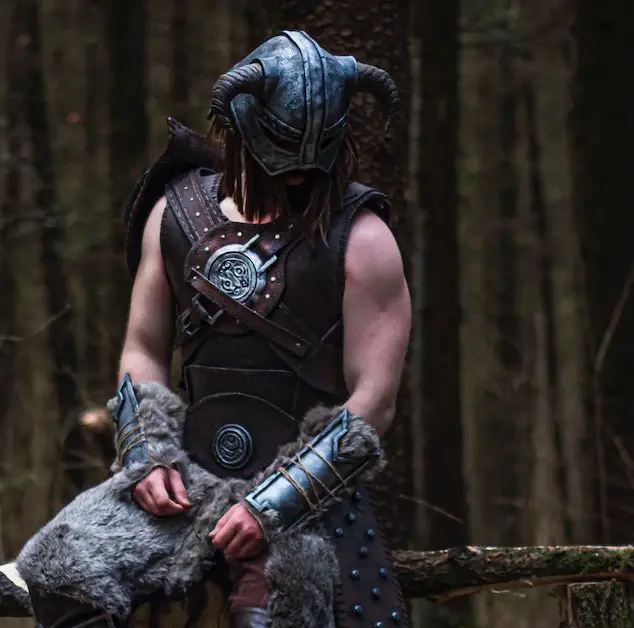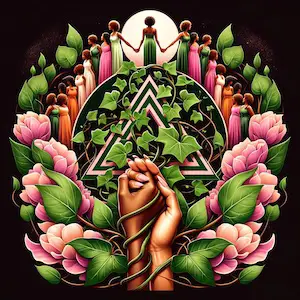The Vikings were a people who lived in Scandinavia from the 8th to the 11th centuries and were famous warriors for their viking chants that showcased fierce warrior spirit and love of adventure.
In this article we will take a deep dive into the history and significance of Viking chants.

Table of Contents
Viking chants are a form of music that dates back to the Viking Age, which spanned from the 8th to the 11th century. These chants were a significant part of Viking culture and were used in various situations, including battles, religious ceremonies, and everyday work. Despite being created over a thousand years ago, Viking chants continue to fascinate people today, providing insight into the unique culture and beliefs of the Vikings.
The History of Viking Chants
The origins of Viking chants are not entirely clear, as they were created and performed in a time when writing was not yet widely used. However, it is believed that they were created by the Vikings themselves, who had a rich oral tradition. Viking chants were likely created to serve a variety of purposes, such as motivating warriors during battles or invoking the gods during religious ceremonies.
The Significance of Viking Chants
Viking chants were not merely songs, but rather were symbolic representations of Viking culture and beliefs. They were used to express a range of emotions, from joy and celebration to sorrow and mourning. In addition, Viking chants were used to convey important messages and to create a sense of community among the Viking people.
One battle chants during raids were common as these chants were designed to intimidate enemies and motivate Viking warriors to fight with bravery and courage. In addition, religious chants were used to connect with the gods and invoke their favor, which was believed to provide protection and strength in battle.
Types of Viking Chants
Viking chants were created for a variety of purposes and were divided into different categories based on their intended use. Some of the most common types of include:
- Battle chants: These were used to motivate and intimidate warriors during battles.
- Religious chants: These were used in religious ceremonies and rituals.
- Work chants: These were used during everyday work, such as rowing a boat or carrying heavy loads.
- Love songs: These were used to express romantic feelings and courtship rituals.
Examples of Viking Chants
Many of the surviving examples are fragmentary and difficult to interpret due to the language and cultural barriers. Additionally, the exact lyrics of these chants are still subject to debate and interpretation.
- “Berserker’s Battle”: This chant was used to motivate Viking warriors before battle, but the exact lyrics are unknown. Some scholars believe that the chant may have included references to Odin and the promise of victory in battle.
- “Sigdrifa’s Prayer”: This religious chant was used to connect with the gods, particularly the goddess Sigdrifa. The exact lyrics are also unknown, but the chant may have included requests for blessings and protection from the gods.
- “Kveldulf’s Song”: This love song was written by the legendary Viking warrior Kveldulf and is one of the few surviving examples of a Viking love song. The lyrics describe Kveldulf’s love for his wife, but the original melody is lost.
- “Rowing Chant”: This chant was used by Viking rowers to keep time and maintain a steady rhythm while rowing. The lyrics are fragmentary, but some scholars believe that they may have included references to the sea and the power of the Viking gods.
There is belief that throat singing was born from the above mentioned chants.
Musical Characteristics of Viking Chants
Viking chants were characterized by simple melodies and repetitive rhythms. They were often performed in unison, with the entire group singing together. Viking chants were typically accompanied by drums, horns, and flutes, which added to the overall impact of the music.
How Viking Chants Were Performed
Viking chants were performed in a variety of settings, from battlefields to religious ceremonies. They were typically performed in groups, with the entire community participating in the singing. In some cases, solo performances were also used, particularly for religious chants or love songs.
In addition to singing, dancing was an important part of Viking chants. The Vikings believed that dancing was a way to connect with the gods and to express their emotions.
The Legacy of Viking Chants
The influence of these chants can be seen in modern music today. Many contemporary musicians have drawn inspiration from Viking chants, incorporating elements of Viking music into their own work. In addition, the popularity of Viking culture has led to the creation of modern interpretations of these chants, which can be heard in live performances and online.
The legacy of Viking chants extends beyond music, however. They provide insight into the beliefs and culture of the Viking people and serve as a reminder of the rich history of this ancient civilization.
Viking Chants Frequently Asked Questions
What musical instruments were used in Viking chants?
Viking chants were typically accompanied by drums, horns, and flutes.
What is the significance of Viking chants today?
Viking chants provide insight into the beliefs and culture of the Viking people and serve as a reminder of the rich history of this ancient civilization.
See Related Posts

Gregorian Christmas Chants

Love Spell Chants

Best Softball Chants for U12

AKA Sorority Chants

Argentina Football Chants

Short Chants and Cheers

Alabama Football Chants

Everything to Know About African Chants

